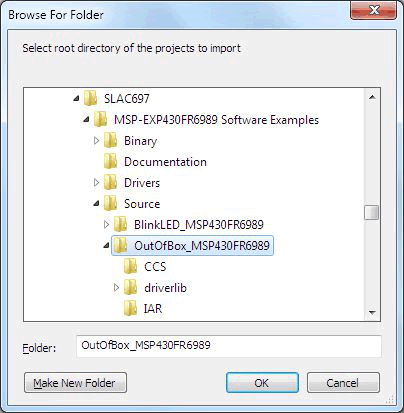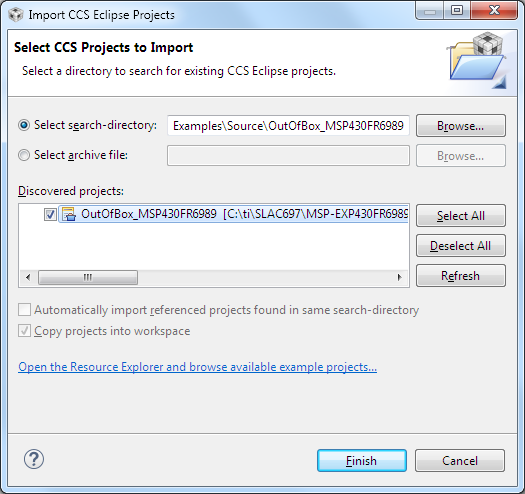SLAU802 March 2019
-
MSP430FR2476 LaunchPad™ Development Kit (LP‑MSP430FR2476)
- Trademarks
- 1 Getting Started
- 2 Hardware
- 3 Software Examples
- 4 Resources
- 5 FAQ
- 6 Schematics
4.1.2 Code Composer Studio IDE
Code Composer Studio Desktop is a professional integrated development environment that supports TI's microcontroller and embedded processors portfolio. Code Composer Studio Desktop comprises a suite of tools used to develop and debug embedded applications. It includes an optimizing C/C++ compiler, source code editor, project build environment, debugger, profiler, and many other features.
Learn more about CCS and download it at http://www.ti.com/tool/ccstudio.
CCS v8.0 or higher is required for this development kit. To load an existing project, launch CCS, choose a workspace directory, and click Project>Import Existing CCS Eclipse Project. Browse to the desired demo project directory that contains main.c (see Figure 13).
 Figure 13. Directing the Project>Import Function to the Demo Project
Figure 13. Directing the Project>Import Function to the Demo Project Selecting the \CCS subdirectory also works. The CCS-specific files are located there.
When you click OK, CCS should recognize the project and allow you to import it. The indication that CCS has found it is that the project appears in the box shown in Figure 14, and it has a checkmark to the left of it.
 Figure 14. When CCS Has Found the Project
Figure 14. When CCS Has Found the Project Sometimes CCS finds the project but does not show a checkmark; this might mean that your workspace already has a project by that name. You can resolve this by renaming or deleting that project. (Even if you do not see it in the CCS workspace, look in the workspace directory on the file system.)